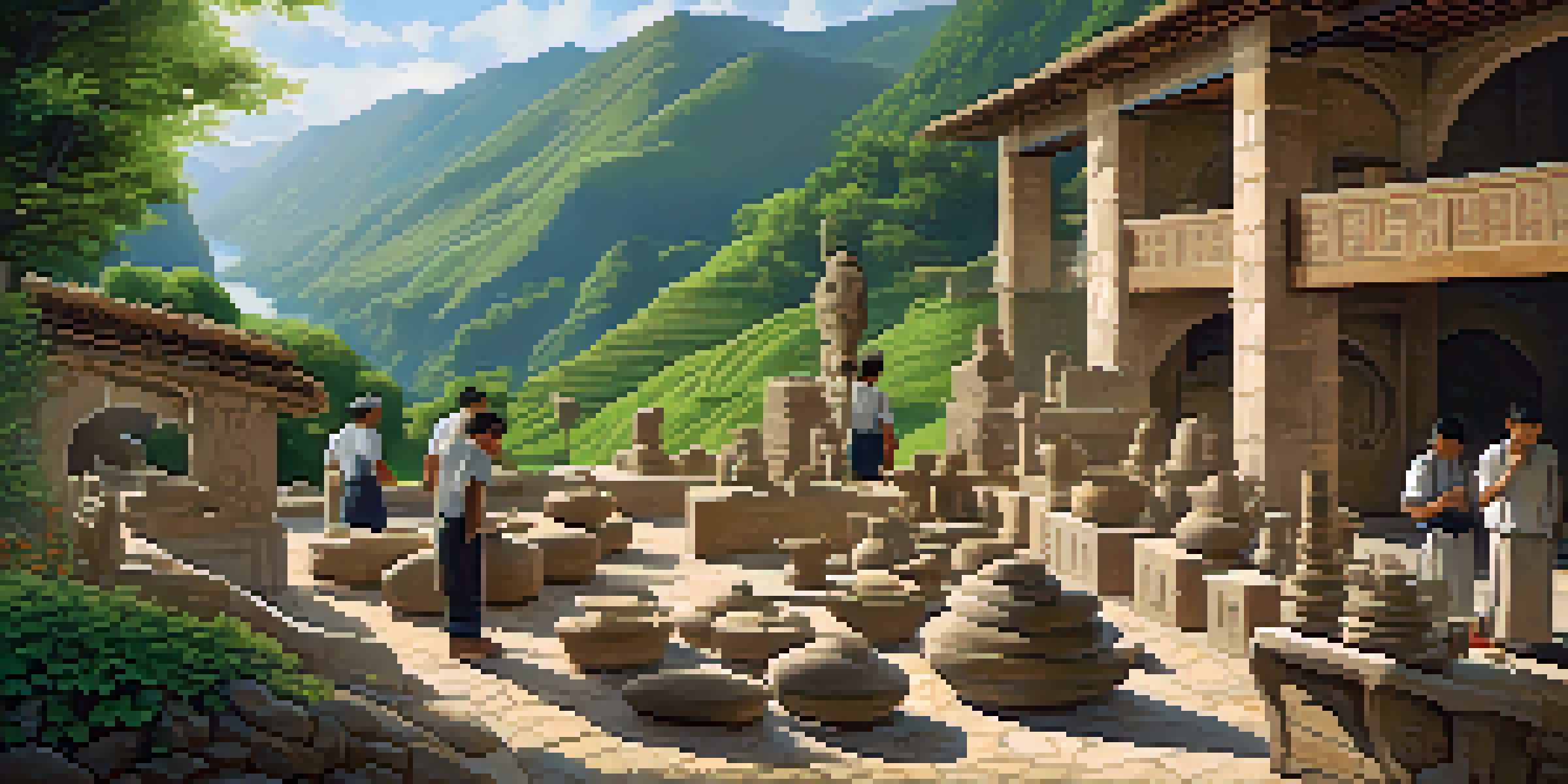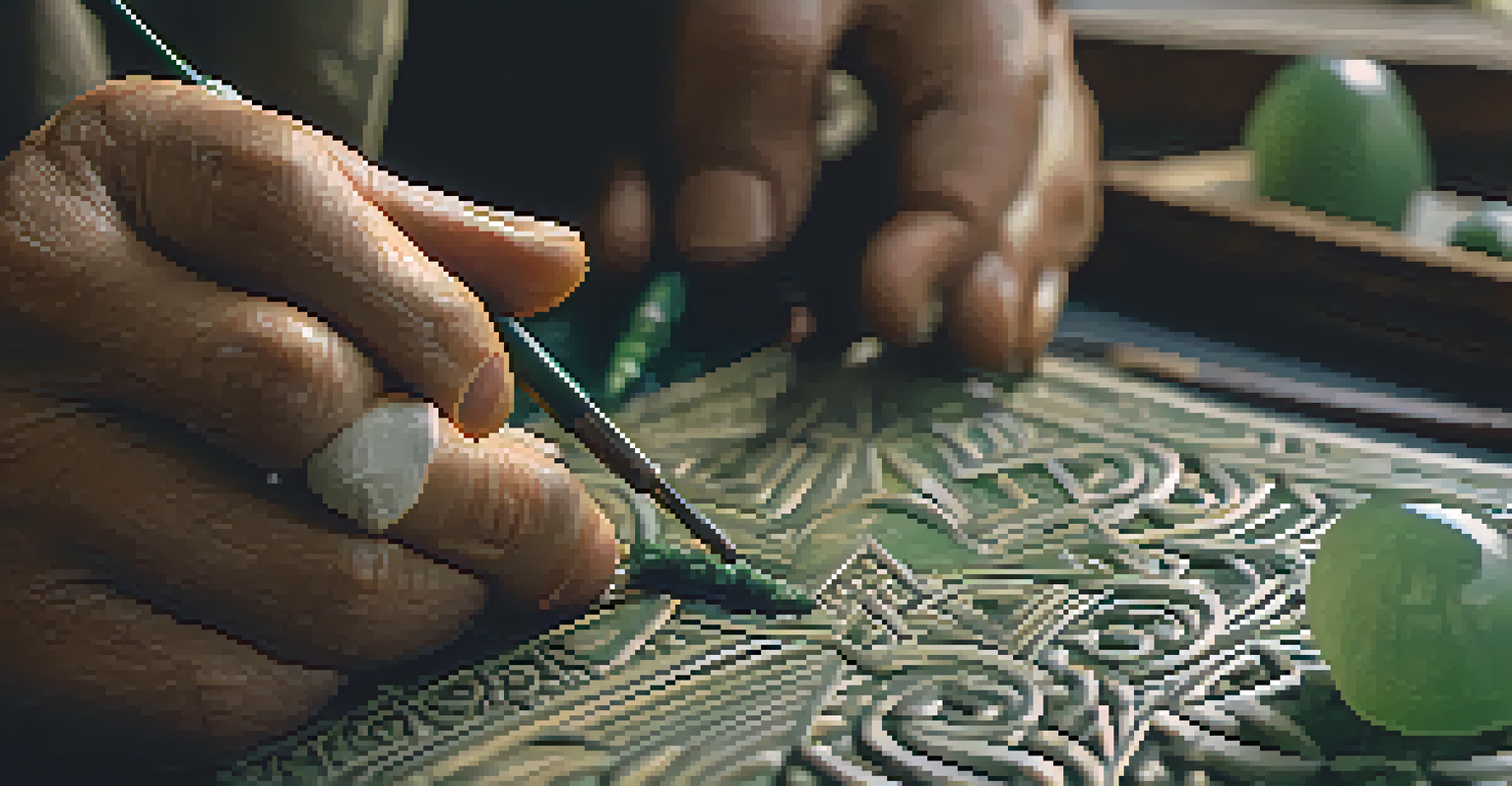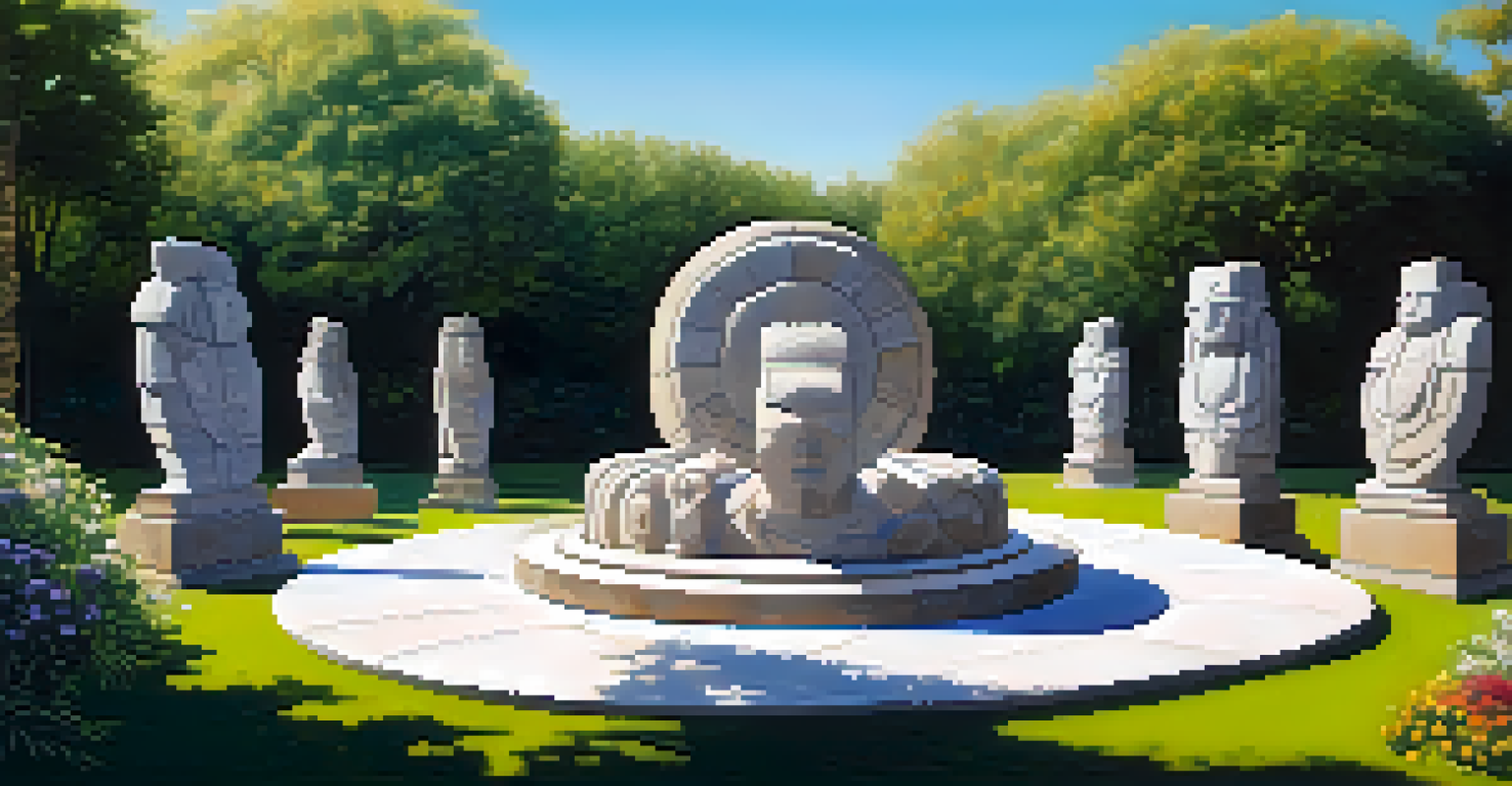Stone Carving in Different Cultures: A Global Perspective

The Ancient Roots of Stone Carving in Civilizations
Stone carving dates back thousands of years, with its roots deeply embedded in ancient civilizations. Cultures like the Egyptians and Mesopotamians used stone not only for construction but also for art and religious purposes. Monuments such as the Great Pyramids and the ziggurats stand testament to the skill and artistry of these early stone carvers.
Every stone has a story to tell, and it is the carver who brings it to life.
In these societies, stone served as a medium for storytelling and commemoration. Carvings depicted gods, pharaohs, and significant events, encapsulating the values and beliefs of the time. This practice laid the groundwork for future generations, influencing how stone carving evolved across different regions.
As we explore further, it's fascinating to see how the techniques and styles of these ancient civilizations shaped the art of stone carving in diverse cultures around the globe. This foundation set the stage for a rich tapestry of artistic expression that continues to thrive today.
Stone Carving in Indigenous Cultures: A Spiritual Connection
Indigenous cultures around the world have long utilized stone carving as a means of expressing their spirituality and connection to nature. For example, Native American tribes often carved totems and other symbols that conveyed their beliefs and histories. Each carving was imbued with meaning, telling stories of ancestors and the natural world.

In places like New Zealand, the Māori people practice a form of stone carving known as 'whakairo.' This art form is not only decorative but also serves as a way to preserve cultural identity and traditions. The intricate designs often reflect the tribe's lineage and connection to the land.
Stone Carving: A Cultural Legacy
Stone carving serves as a vital means of storytelling and cultural expression across various civilizations, linking past traditions to contemporary practices.
These examples illustrate how stone carving transcends mere artistry; it becomes a vital part of cultural heritage, fostering a sense of belonging and continuity. As we delve deeper, the significance of stone carving in indigenous cultures reveals a profound respect for craftsmanship and storytelling.
The Renaissance: Stone Carving as High Art
The Renaissance marked a pivotal moment for stone carving, elevating it to a recognized form of high art. Artists like Michelangelo and Donatello transformed the medium, infusing their works with realism and emotional depth. Michelangelo's 'David' is a prime example, showcasing not only skill but also the artist's understanding of human anatomy.
Art is not what you see, but what you make others see.
During this time, the techniques and tools used in stone carving advanced significantly. Carvers began to explore the play of light and shadow, enhancing the three-dimensional quality of their sculptures. This period also saw the rise of public art, with many works commissioned for cathedrals and public squares, making art accessible to a broader audience.
The Renaissance's impact on stone carving is still felt today, as contemporary artists draw inspiration from this rich history. The blend of technical skill and artistic expression during this time set a benchmark that continues to influence sculptors around the world.
Asian Cultures: Stone Carving Techniques and Styles
In Asia, stone carving boasts a rich variety of techniques and styles, each reflecting the unique cultural narratives of the region. For instance, Chinese stone carving often emphasizes intricate details and symbolism, with jade being a prized material. The carvings frequently depict dragons, phoenixes, and scenes from folklore, showcasing the importance of nature and mythology.
India's stone carving tradition, particularly in temple architecture, features elaborate sculptures that narrate religious tales. The intricate carvings on temples like those in Khajuraho serve both an aesthetic and spiritual purpose, inviting worshippers to connect with the divine through art.
Renaissance's Impact on Stone Art
The Renaissance elevated stone carving to high art, introducing realism and emotional depth that continues to inspire modern sculptors.
These regional styles highlight the diversity within stone carving practices in Asia. While the techniques may vary, the underlying goal remains the same: to create art that resonates with cultural identity and spiritual beliefs.
Stone Carving in Africa: A Blend of Tradition and Innovation
In Africa, stone carving is not just an art form; it's a way to preserve history and express identity. Different regions have their own traditional styles, such as the Shona people of Zimbabwe, known for their soapstone sculptures. These carvings often reflect the natural world and spiritual beliefs, serving as both art and storytelling devices.
Many African stone carvers today blend traditional techniques with contemporary themes, creating works that resonate on multiple levels. This fusion of old and new allows artists to comment on current social issues while honoring their heritage. For instance, modern sculptures may address themes of migration, community, and resilience.
This adaptability shows how stone carving in Africa is a living art form, continuously evolving while remaining rooted in tradition. The vibrant expressions found in African stone carving offer a glimpse into the dynamic interplay between culture and creativity.
Stone Carving in Contemporary Art: A Modern Revival
Today, stone carving is experiencing a revival, with contemporary artists reimagining the medium in innovative ways. These artists often challenge traditional methods, exploring new materials and techniques to push the boundaries of stone as a medium. This evolution is evident in the work of artists who incorporate technology, such as 3D modeling, into their carving processes.
Moreover, contemporary stone carvers are increasingly addressing social and environmental themes through their work. By choosing to carve stone with a message, they engage audiences in conversations about pressing issues, from climate change to cultural identity. This not only revitalizes the art form but also connects it to the world around us.
Modern Challenges and Innovations
While facing challenges from digital art and sustainability concerns, contemporary stone carving is evolving through innovative techniques and themes.
This modern approach to stone carving reflects a broader trend in the art world, where artists seek to blend tradition with innovation. As we look ahead, it's exciting to see how stone carving will continue to evolve, maintaining its relevance while honoring its rich history.
The Future of Stone Carving: Challenges and Opportunities
As we move forward, stone carving faces both challenges and opportunities. The rise of digital art forms and changing tastes in the art world may pose a threat to traditional stone carving practices. However, this shift also presents an opportunity for artists to innovate and reach new audiences through collaborations and interdisciplinary projects.
Sustainability is another critical challenge, as the extraction of stone can have significant environmental impacts. Artists and communities are increasingly advocating for responsible sourcing and the use of recycled materials, ensuring that the beauty of stone carving does not come at the expense of the planet.

Looking ahead, the future of stone carving is bright, with the potential for continued growth and transformation. By embracing new technologies and fostering a commitment to sustainability, the art of stone carving can thrive in a modern context while preserving its rich heritage.